|
|

|
Porsche, and the Porsche crest are registered trademarks of Dr. Ing. h.c. F. Porsche AG.
This site is not affiliated with Porsche in any way. Its only purpose is to provide an online forum for car enthusiasts. All other trademarks are property of their respective owners. |
|
|
  |
| DC_neun_vierzehn |
 Jun 26 2024, 10:22 AM Jun 26 2024, 10:22 AM
Post
#21
|
|
Member   Group: Members Posts: 437 Joined: 16-November 20 From: Delaware Shore Member No.: 24,893 Region Association: MidAtlantic Region 
|
The replacement Dansk tank arrived today.
Shout out to George at Auto Atlanta for extensive communications with Dansk on the issue and getting them to send me a replacement. In a perfect world, it wouldn't take Dansk a month to get me a new tank, but I'm grateful nonetheless. I test fitted the filler and expansion tank and fuel filler and both bolt on fine - no issues. That made me very happy. 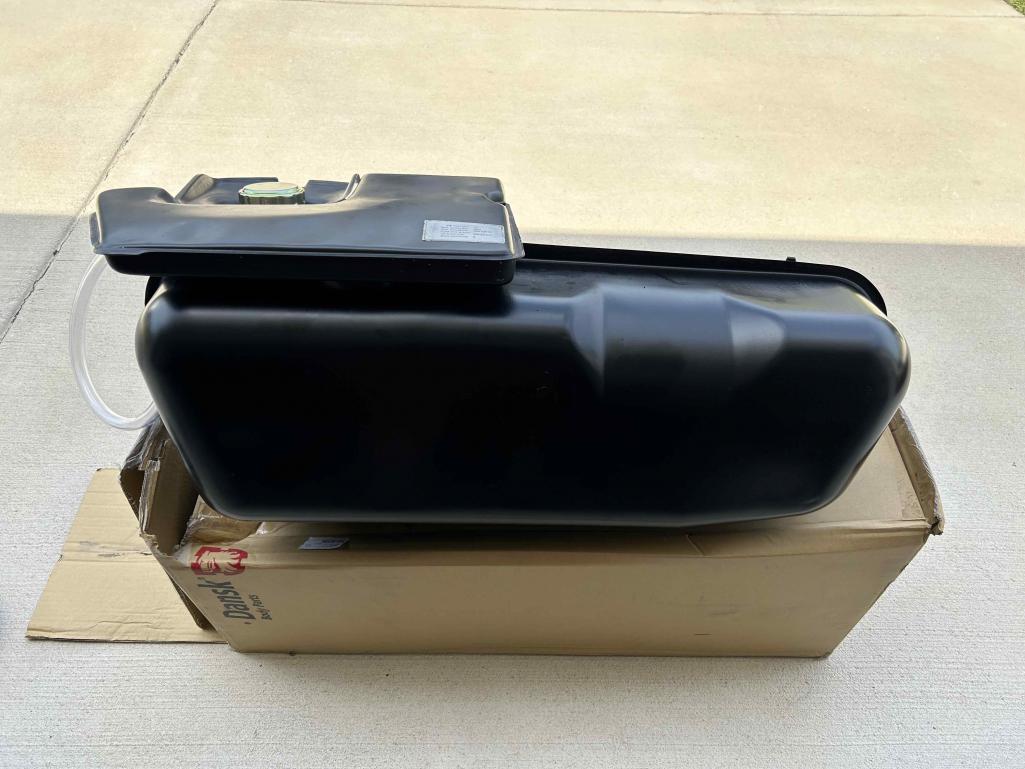 As others have reported, which I was prepared for, the rib/seam is too tall where the tank strap bridge sits. So I'll either have to trim that down or shimmy the bridge. 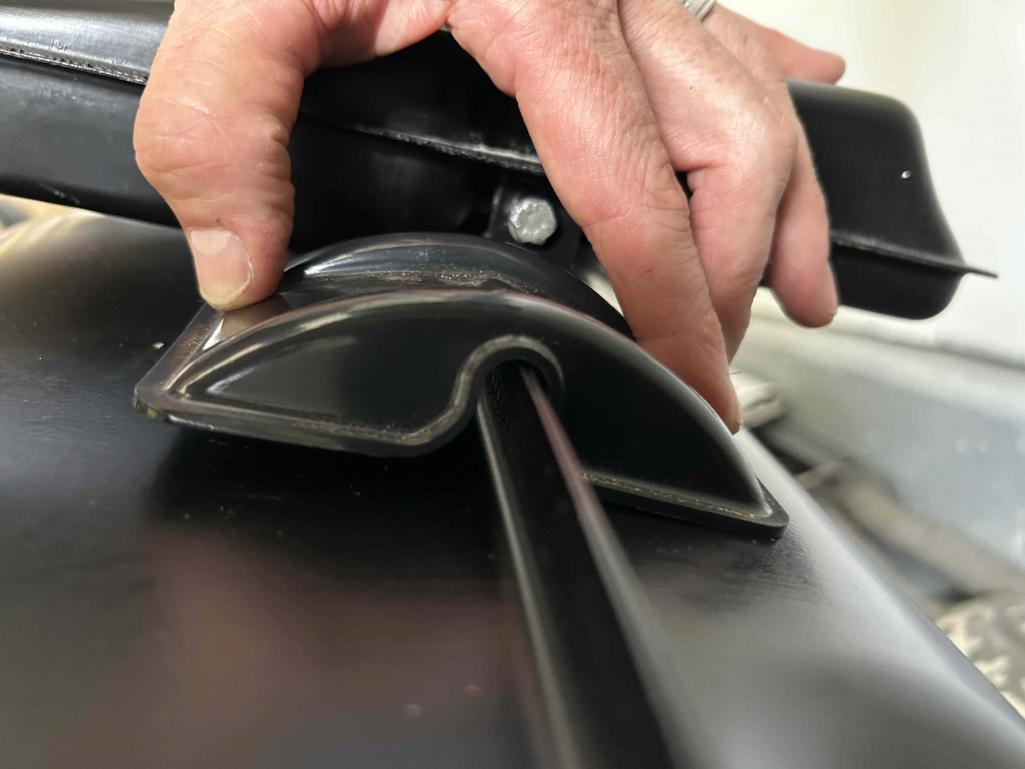 |
| Superhawk996 |
 Jun 26 2024, 10:32 AM Jun 26 2024, 10:32 AM
Post
#22
|
|
914 Guru      Group: Members Posts: 6,464 Joined: 25-August 18 From: Woods of N. Idaho Member No.: 22,428 Region Association: Galt's Gulch 
|
Just baffles me how Dansk can’t be bothered to address the weld flange. (IMG:style_emoticons/default/headbang.gif)
This happens constantly in the aftermarket. Parts don’t fit and it’s like they never bothered to even trial fit them. Then once they are aware of the problem, they do nothing. I guess it’s a luxury that comes from knowing you’re the only one making parts and buyers just need to deal with it. Must be somehow related to their inability to use a trim die to cut the flange smaller or their welding/sealing process that needs the wider flange I get it as a buyer; it’s a simple matter of having a part in hand that you can modify to fit is better than nothing at all. Still shameful. Glad you’re back on a path to getting your tank swap done. |
| DC_neun_vierzehn |
 Jun 26 2024, 10:35 AM Jun 26 2024, 10:35 AM
Post
#23
|
|
Member   Group: Members Posts: 437 Joined: 16-November 20 From: Delaware Shore Member No.: 24,893 Region Association: MidAtlantic Region 
|
Questions as I dust off the cobwebs from a month ago when I pulled the old tank ...
1. Do I have the order of these pieces correct? Send pipe: 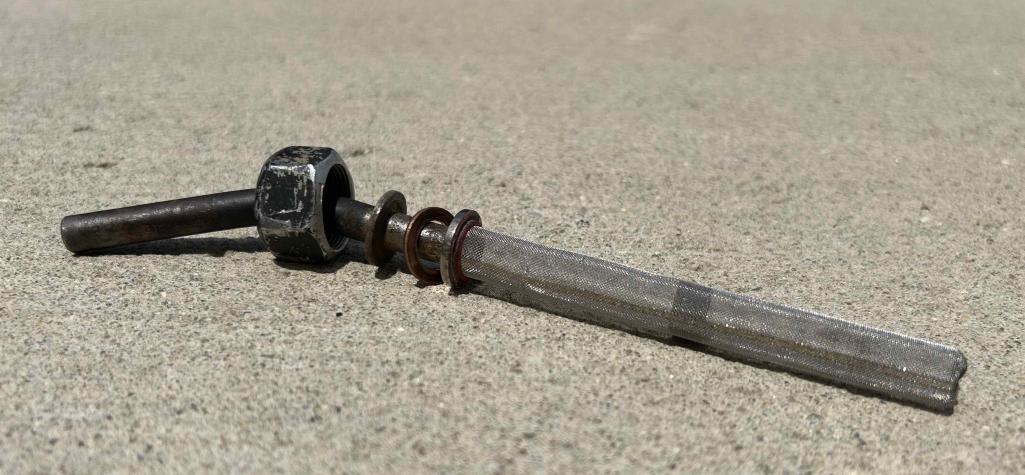 Return pipe: 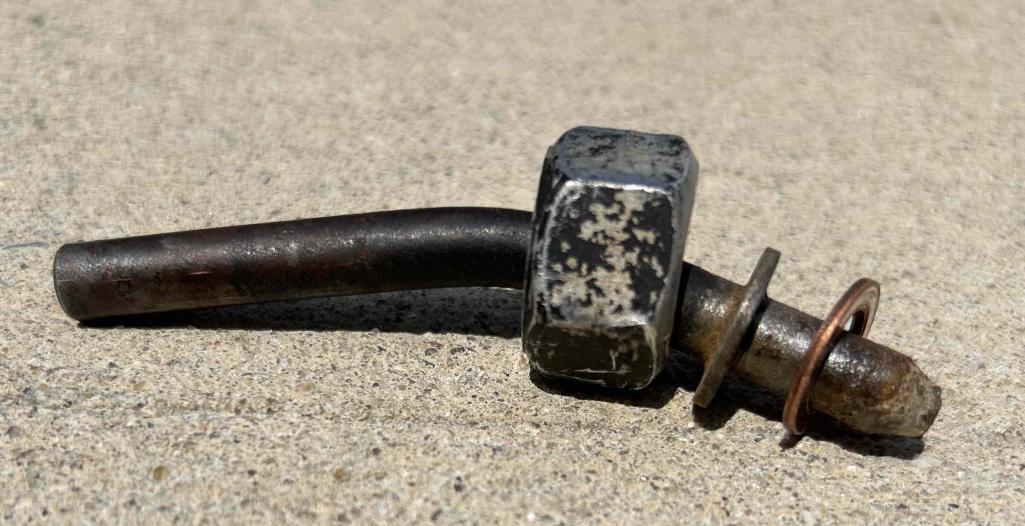 2. Can I reuse the copper washers that I bought new from AA that I installed on the original Dansk tank? I tightened them down all the way when I installed them on the original Dansk tank. My fear is leaks by reusing them. 3. I put a new sock on the original Dansk tank, but now I'm worried that the red washer on it is destroyed from removing it on the original Dansk tank where it was tightened down fully. I need a new washer/seal here, right? 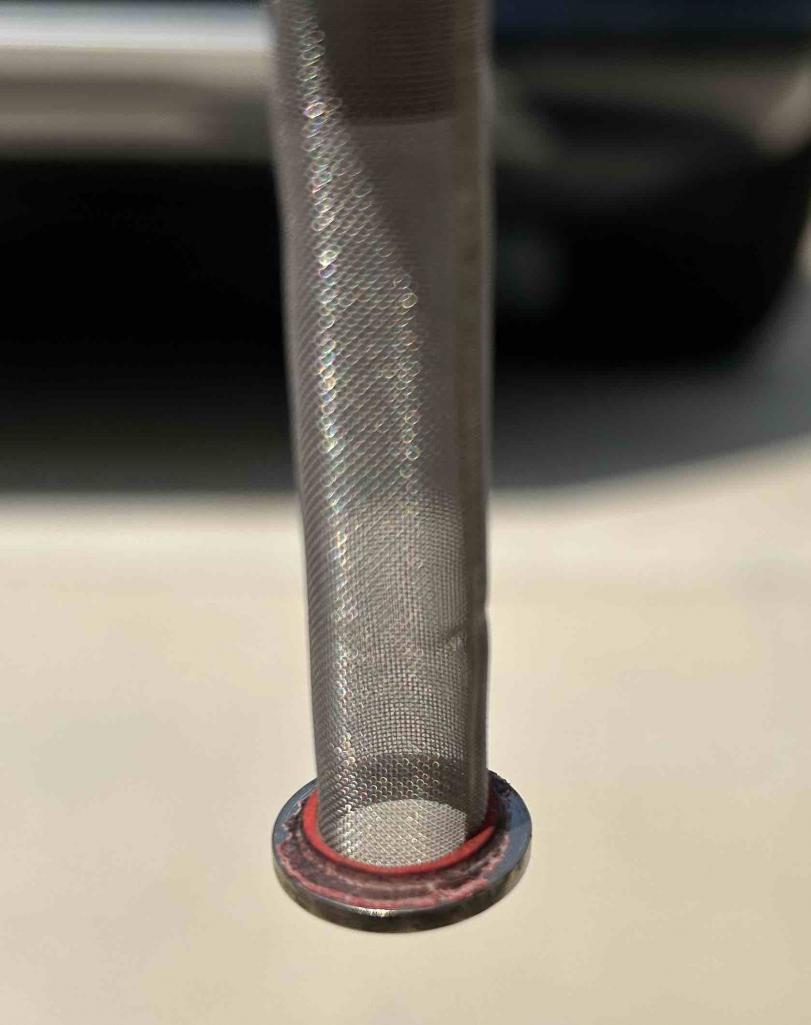 |
| Superhawk996 |
 Jun 26 2024, 11:20 AM Jun 26 2024, 11:20 AM
Post
#24
|
|
914 Guru      Group: Members Posts: 6,464 Joined: 25-August 18 From: Woods of N. Idaho Member No.: 22,428 Region Association: Galt's Gulch 
|
Copper work hardens when you tightened the fitting.
However, you can heat it red hot and drop into water to anneal back to a soft state. I’ve never had issues reusing copper sealing washers as long as I anneal them before reusing. I’d probably replace the sock / red seal - just such a PITA if it leaks to remove the tank. IIRC - people have found that the red fiber washer in the HF sealing washer kits is very close in size. Maybe others will chime in or do a few searches to confirm that |
| Jamie |
 Jun 26 2024, 12:06 PM Jun 26 2024, 12:06 PM
Post
#25
|
|
Senior Member    Group: Members Posts: 1,052 Joined: 13-October 04 From: Georgetown,KY Member No.: 2,939 Region Association: South East States 
|
Copper work hardens when you tightened the fitting. However, you can heat it red hot and drop into water to anneal back to a soft state. I’ve never had issues reusing copper sealing washers as long as I anneal them before reusing. I’d probably replace the sock / red seal - just such a PITA if it leaks to remove the tank. IIRC - people have found that the red fiber washer in the HF sealing washer kits is very close in size. Maybe others will chime in or do a few searches to confirm that After destroying 2 socks during installation, I decided they were a useless part more easily serviced by placing an external filter between tank and pump. (IMG:style_emoticons/default/aktion035.gif) |
| Superhawk996 |
 Jun 26 2024, 04:02 PM Jun 26 2024, 04:02 PM
Post
#26
|
|
914 Guru      Group: Members Posts: 6,464 Joined: 25-August 18 From: Woods of N. Idaho Member No.: 22,428 Region Association: Galt's Gulch 
|
These dumb OEMs . . . Constantly putting parts on cars that aren’t needed (IMG:style_emoticons/default/lol-2.gif)
|
| Superhawk996 |
 Jun 26 2024, 06:58 PM Jun 26 2024, 06:58 PM
Post
#27
|
|
914 Guru      Group: Members Posts: 6,464 Joined: 25-August 18 From: Woods of N. Idaho Member No.: 22,428 Region Association: Galt's Gulch 
|
Adding something more than my previous non constructive sarcasm - I really shouldn’t have posted that. . . . But I did. (IMG:style_emoticons/default/sad.gif)
So why is the sock there? All pumps do a much better job of pumping than sucking. This is the reason filters go on the pump output. Putting a filter on the pump inlet decreases pump efficiency at best. At worst, not having a filter at all on the pump inlet means the pump has to pump whatever comes its way. Pumping rust, sand, or other debris that ends up in fuel will shorten the life of the pump. Old fashioned diaphragm pumps aren’t nearly as easily damaged or clogged by debris as is a rotary pump. If enough large debris is present, it can even block the pump inlet. Fuel injection components want a 10 micron filter. Carbs about 30-40 microns. Used alone, these filters can clog very quickly and would starve the pump both of fuel to feed to the engine but also the cooling fluid for the pump (which also happens to be the fuel). Clogged inlet or outlet = burned out pump eventually. The solution? Put a coarse 100 micron screen mesh filter on the pump suction side to protect the pump. The filter is coarse enough that it won’t be easily clogged. If the screen is repeatedly clogging there are bigger issues (rusted tank, massive fuel contamination) that need to be resolved. This 100 micron pre filter is large enough to keep big abrasive debris out of the pump without limiting fuel flow at all. Then an appropriate filter is put on the pressure side of the pump to keep fuel injectors or carbs clean. The pressure side of the pump is much more capable of overcoming back pressure caused by such a fine filtration media as it becomes loaded. That is why the sock is there and why it is needed. |
| bkrantz |
 Jun 26 2024, 07:30 PM Jun 26 2024, 07:30 PM
Post
#28
|
|
914 Guru      Group: Members Posts: 8,042 Joined: 3-August 19 From: SW Colorado Member No.: 23,343 Region Association: Rocky Mountains 
|
How grungy is the inside of the old tank? That might be less significant than any rust-through or thin spots, typically from the outside in, and commonly where the stock felt pads held moisture against the tank. Maybe reconsider restoring your original tank? The original tank is rough inside. It looks like a PO tried to restore the inside with some sort of coating which is peeling and rust underneath. The gas I drained had noticeable floaters/debris. The fuel filter was pretty clogged. The tank is heading to the dump. FWIW, I just replaced my tank with a new one. I didn't have that option in 2014. After 10 years of housing modern day gasoline the liner dissolved and the resulting sludge resembled some Witches brew. This brew then took out my fuel pump & 2 in-line filters! Currently the old tank is in the back of my truck in the box that the new one came in. Just waiting for some opportunistic thief to lighten my load. (IMG:style_emoticons/default/happy11.gif) That's why the old school guys, like the ancient shop that "boiled out" my tank, say never use interior coatings. |
| fixer34 |
 Jun 26 2024, 08:39 PM Jun 26 2024, 08:39 PM
Post
#29
|
|
Senior Member    Group: Members Posts: 1,153 Joined: 16-September 14 From: Chicago area Member No.: 17,908 Region Association: Upper MidWest 
|
However, the measurements do not match re distance from the center of the filler hole to the drivers side tab for the expansion tank (which is the reason I cannot get the expansion tank of after bolting down the fuel filler piece). The driver side tab is 10 mm further toward the driver side as you can see in the pics below (old tank is approx. 27.5 mm and the new tank is approx. 26.5 mm). OLD TANK: NEW TANK: Not to be picky, but your measurements are actually cm (centimeters), not mm (millimeters). The difference is 10mm, which equals 1cm. You can also confuse your friends by telling them you need a 1cm socket. |
| wonkipop |
 Jun 27 2024, 03:53 AM Jun 27 2024, 03:53 AM
Post
#30
|
|
Advanced Member     Group: Members Posts: 4,594 Joined: 6-May 20 From: north antarctica Member No.: 24,231 Region Association: NineFourteenerVille 
|
Adding something more than my previous non constructive sarcasm - I really shouldn’t have posted that. . . . But I did. (IMG:style_emoticons/default/sad.gif) So why is the sock there? All pumps do a much better job of pumping than sucking. This is the reason filters go on the pump output. Putting a filter on the pump inlet decreases pump efficiency at best. At worst, not having a filter at all on the pump inlet means the pump has to pump whatever comes its way. Pumping rust, sand, or other debris that ends up in fuel will shorten the life of the pump. Old fashioned diaphragm pumps aren’t nearly as easily damaged or clogged by debris as is a rotary pump. If enough large debris is present, it can even block the pump inlet. Fuel injection components want a 10 micron filter. Carbs about 30-40 microns. Used alone, these filters can clog very quickly and would starve the pump both of fuel to feed to the engine but also the cooling fluid for the pump (which also happens to be the fuel). Clogged inlet or outlet = burned out pump eventually. The solution? Put a coarse 100 micron screen mesh filter on the pump suction side to protect the pump. The filter is coarse enough that it won’t be easily clogged. If the screen is repeatedly clogging there are bigger issues (rusted tank, massive fuel contamination) that need to be resolved. This 100 micron pre filter is large enough to keep big abrasive debris out of the pump without limiting fuel flow at all. Then an appropriate filter is put on the pressure side of the pump to keep fuel injectors or carbs clean. The pressure side of the pump is much more capable of overcoming back pressure caused by such a fine filtration media as it becomes loaded. That is why the sock is there and why it is needed. except (and i don't mean to be picky) but the stock factory set up is 1) the sock and 2) one of those old school cube VW fuel filters just before the line goes into the pump when located under the engine - all before the pump, which was a roller cell pump. and nothing after the pump. these days i still have not put my rebuilt roller cell pump back in. i run a turbine pump with a high pressure filter after it to protect my precious L jet NOS injectors. because a turbine pump (modern) can spit its guts into the line and ruin the injectors (unlike the original roller cell pumps). i still have the cube before the pump. and the sock is long gone, lost in conversion to right hand drive when we had to cut the bottom of the tank down to half its width for a footwell on the right hand side. but i know what you are saying. the sock is there for a reason. if nothing else it also acts as a kind of a baffle too? i'd have it there still if i had a left hand drive car. but originally they also did run that filter right before the pump not after. |
| Superhawk996 |
 Jun 27 2024, 06:50 AM Jun 27 2024, 06:50 AM
Post
#31
|
|
914 Guru      Group: Members Posts: 6,464 Joined: 25-August 18 From: Woods of N. Idaho Member No.: 22,428 Region Association: Galt's Gulch 
|
but originally they also did run that filter right before the pump not after. Yup. And having a fine filter at the pump inlet was part of the vapor lock problem. Along with a very long suction line and of course having the pump so close to the engine and exhaust heat. Add to that, a plastic fuel filter in that same hot location and it’s susceptibility to engine fires. (IMG:style_emoticons/default/chair.gif) Mistakes were definitely made but a mesh sock on the inlet wasn’t one of them. The fuel pump and filter location wasn’t the smartest packaging job and not VW/Porsche’s finest moment. I chalk it up to how difficult it is to package a mid-engine vehicle. The roller pump is pretty susceptible to wear due to abrasives and contamination of the little relief valve. It was not a cheap pump in a day and age where engine driven mechanical diaphragm pumps were still the norm. Development and testing over the past 50 odd years has served to confirm that the fine filtration FI requires, belongs on the pump outlet. However, I do admire how many things they did get right, and I do wonder how much better 914s would have gotten if it had more than its short six year lifecycle. |
| Superhawk996 |
 Jun 27 2024, 07:21 AM Jun 27 2024, 07:21 AM
Post
#32
|
|
914 Guru      Group: Members Posts: 6,464 Joined: 25-August 18 From: Woods of N. Idaho Member No.: 22,428 Region Association: Galt's Gulch 
|
As always a picture is worth a 1000 words.
Modern in tank pump still has a mesh sock at the inlet. 50 odd years of development. In tank pump uses the fuel in the tank to cool the pump in addition to the fuel running through it. The pump is at the very bottom of the tank to maximize fuel pick up. All fine filtration is done on the high pressure outlet. The surface area the inlet sock has been increased vs. 914 which is a good thing. However massive contamination would still clog the inlet sock. As a side point, it’s worth nothing that modern plastic tanks have eliminated the tank rusting issue that lead to OPs need to replace the tank in the first place. Lots of good stuff has been learned since the late 60s. 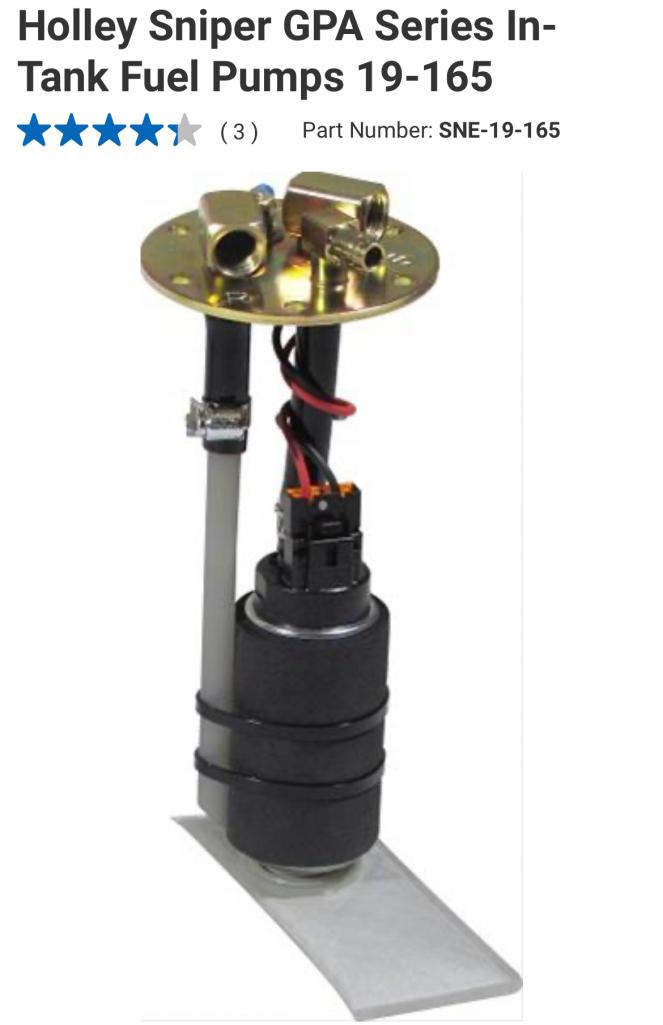 |
  |
4 User(s) are reading this topic (4 Guests and 0 Anonymous Users)
0 Members:

|
Lo-Fi Version | Time is now: 16th September 2024 - 01:56 PM |
Invision Power Board
v9.1.4 © 2024 IPS, Inc.









